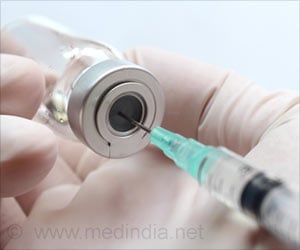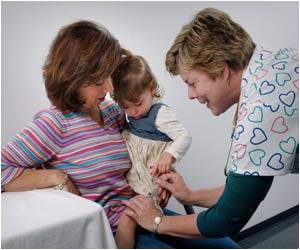Highlights
- The United States of America is struck down with the worst case of mumps in a decade, with 2,879 confirmed cases in 2016.
- The MMR vaccine is 88% effective with two doses.
- The CDC is considering recommending a third dose of vaccine in response to the sudden surge.
Mumps is a contagious viral disease spread through saliva and mucus.
The usual symptoms of mumps mimic that of a flu. It includes fever, headache, muscle aches, tiredness and loss of appetite lasting a few days. People experience salivary glands swelling, leading to puffy cheeks and a swollen jaw. Symptoms can last from 2-10 days. The incubation period ranges from 12-25 days.
In adults, mumps can occasionally cause complications including deafness and inflammation of the brain, ovaries, breast tissue or testicles.
Being a viral infection, mumps does not respond to antibiotics (which treats bacterial infections). Doctors recommend rest and over-the-counter pain relievers.
The largest number of yearly mumps outbreak before 2016 was seen in 2006, when more than 6,500 people were affected.
Majority of cases this year, is caused by outbreaks in Arkansas with 1,870 cases and in Iowa with 683 cases.
The cases in Iowa is occurring across all age groups. Most cases occur in the age group of 6-17 year olds followed by the 18-25 year olds.
Four other states including Indiana, Illinois, Massachusetts and Oklahoma have also reported more than 100 cases this year. Most of the cases in Massachusetts have occurred at Harvard.
Additional infections, which may or may not be related to that school, have occurred among students within the Boston-Cambridge area, according to Dr. Alfred DeMaria, medical director and state epidemiologist at the Massachusetts Department of Public Health.
Immunization
The U.S. mumps vaccination program started in 1967 and the number of mumps cases has decreased by more than 99%. The MMR vaccine is 88% effective with two doses.
The Center for Disease Control and Prevention (CDC) recommends that children should get two doses of the MMR vaccine, which protects against measles, mumps and rubella, but it may not be 100% effective.
Children get their first dose between 12 to15 months of age and the second dose between 4 to 6 years. Vaccine will be less effective with a single dose.
The MMVR vaccine, which protects against measles, mumps, rubella and varicella (chickenpox), can be used in children between the ages of 12 months and 12 years.
The Advisory Committee on Immunization Practices is considering recommendation of a third dose of vaccine in response to the surge in the number of cases.
The CDC recommended that students University of Iowa campus, receive a third dose of the MMR vaccine.
“Studies that have tried to examine the effectiveness of a third dose of MMR vaccine to control mumps outbreaks were limited because vaccination occurred after the outbreak started to decline,” explained Huong McLean, an associate research scientist at the Marshfield Clinic Research Foundation, which has partnered with the CDC on the issue.
“It is important to understand that if you have a room of 100 people who have been vaccinated with the mumps vaccine and you expose them to mumps, you’re still gonna get 12 people who will develop mumps,” Patel said.
Most of these outbreaks are occurring among vaccinated people. But vaccination is the number one preventive measure against mumps.
“Genotype G is the virus that’s been circulating pretty consistently in the US since 2006,” Patel said. She said that studies show the current vaccine is effective against this strain and that the CDC is not concerned about changing strains.
Another possible explanation of the current outbreak would be the waning power of vaccine.
Conclusion
“We have some overall guidance that states can use on whether or not they should think about implementing a third dose of the MMR vaccine”, Patel said.
Each community being unique, it is up to the individual states to decide whether to use a third dose.
The CDC is collaborating with the states and working with the Advisory Committee on Immunization Practices on the third dose recommendation.
Source-Medindia











